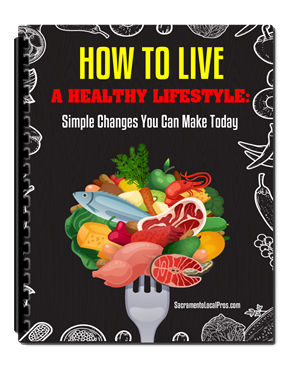Skin cancer remains one of the most prevalent cancers worldwide, yet it is also among the most preventable with the right knowledge and precautions.
Many people mistakenly believe that the danger of UV rays is limited to warm, sunny days, but the reality is that skin damage can occur under a variety of conditions—whether it’s a cloudy afternoon, a crisp fall day, or a snow-covered winter morning.
UV radiation doesn’t take a break based on the weather or time of year, making it vital to protect your skin no matter the season.
Simple daily habits, such as wearing sunscreen and choosing protective clothing, can go a long way in reducing your risk.
Understanding the risks and adopting preventive measures is the key to maintaining healthy skin year-round.
Stay informed and take action—read ahead for 12 essential tips to protect yourself from skin cancer throughout every season.
1)) Use Sunscreen Daily
Using sunscreen daily is one of the most effective ways to protect your skin from harmful ultraviolet (UV) radiation.
Sunscreen forms a critical barrier that minimizes the risk of sunburn, premature aging, and skin cancer.
Choose a broad-spectrum sunscreen with at least SPF 30 to ensure protection against both UVA and UVB rays.
Apply it generously to any exposed skin, and don’t forget often-overlooked areas like your ears, neck, and the tops of your hands.
Reapply every two hours, especially if you’re swimming or sweating, to maintain its protective benefits.
Incorporating sunscreen into your everyday routine helps shield your skin from damage, keeping it healthy and resilient year-round.
2)) Wear Protective Clothing
Wearing protective clothing is a simple yet powerful way to guard your skin against harmful UV rays.
Long-sleeved shirts, pants, and wide-brimmed hats provide a physical barrier that limits exposure to the sun.
Clothing made from tightly woven fabrics and labeled with an ultraviolet protection factor (UPF) offers even greater defense, effectively blocking a significant portion of UV radiation.
Adding sunglasses with 100% UV protection shields the sensitive skin around your eyes while also safeguarding your vision.
Prioritizing protective clothing in your daily wardrobe helps ensure that your skin stays safe and reduces your risk of damage regardless of the season.
3)) Avoid Peak Sun Hours
Limiting exposure to the sun during peak hours is a crucial step in protecting your skin from harmful UV rays.
The sun’s intensity is at its highest between 10 a.m. and 4 p.m., making this the timeframe when your skin is most vulnerable to damage.
If you need to be outdoors during these hours, seek shade under umbrellas, trees, or other structures to minimize direct sun exposure.
Planning outdoor activities for the early morning or late afternoon not only reduces UV risks but also helps you stay cooler and more comfortable.
Being mindful of peak sun hours supports healthier skin and lowers your chances of developing long-term skin issues.
4)) Seek Shade Frequently
Seeking shade frequently is a practical and effective method to shield your skin from harmful UV rays.
Whether you are enjoying time at the park, walking around the city, or relaxing outdoors, staying under the cover of trees, canopies, or umbrellas reduces your skin’s direct exposure to sunlight.
This important habit is especially useful during midday when the sun’s rays are at their strongest.
Combining shade with additional sun protection measures, such as wearing sunscreen and protective clothing, enhances your overall defense against UV damage.
Making it a priority to spend more time in shaded areas helps ensure your skin remains healthy and protected year-round.
5)) Wear Wide-Brimmed Hats
Wearing wide-brimmed hats is an easy and reliable way to shield your face, neck, and ears from harmful UV rays.
These areas are particularly vulnerable to sun damage and are often exposed to direct sunlight.
A hat with a brim at least three inches wide offers ample protection and casts shade over sensitive skin, significantly reducing the chances of sunburn and long-term damage.
For added effectiveness, choose hats made from tightly woven fabrics or those with a UPF rating to block even more UV radiation.
Making wide-brimmed hats a staple in your outdoor attire helps safeguard some of the most delicate parts of your skin while keeping you comfortable and stylish.
6)) Use UV-Blocking Sunglasses
Using UV-blocking sunglasses is an essential step in protecting both your eyes and the delicate skin around them from harmful ultraviolet rays.
Prolonged exposure to UV radiation can contribute to cataracts, macular degeneration, and even skin cancer on the eyelids.
Choosing sunglasses labeled with 100% UV protection ensures that both UVA and UVB rays are effectively blocked.
Large, wraparound styles offer additional coverage, preventing sunlight from entering from the sides.
Incorporating UV-blocking sunglasses into your everyday sun protection routine helps safeguard your eye health and preserves the sensitive skin in this area, promoting a healthier, more protected lifestyle.
7)) Avoid Indoor Tanning
Avoiding indoor tanning is critical for maintaining healthy skin and reducing the risk of serious health issues.
Tanning beds emit UV radiation that is often more concentrated and harmful than natural sunlight, significantly increasing the likelihood of developing skin cancer, including melanoma.
Frequent use of tanning beds accelerates skin aging, leading to wrinkles, dark spots, and loss of elasticity over time.
Relying on safer alternatives, such as self-tanning lotions or sprays, allows you to achieve a sun-kissed glow without endangering your skin.
Choosing to avoid indoor tanning demonstrates a commitment to your overall health and supports long-term skin protection.
8)) Check Your Skin Regularly
Checking your skin regularly is an important habit for detecting early signs of potential skin issues, including skin cancer.
Performing routine self-examinations allows you to monitor for new moles, growths, or changes in existing spots that may indicate underlying health concerns.
Use a mirror or ask for help to examine hard-to-see areas, including your back and scalp.
If you notice any irregularities, such as asymmetrical shapes, uneven borders, changes in color, or unusual sizes, consult a dermatologist promptly.
Making regular skin checks a priority empowers you to take proactive steps toward protecting your skin and overall well-being.
9)) Stay Informed On UV Indexes
Staying informed on UV indexes is a vital step in managing your exposure to harmful ultraviolet radiation.
The UV index provides a clear measurement of the sun's intensity at a specific location and time, helping you plan your outdoor activities more safely.
Higher UV index levels indicate a greater risk of skin damage and the need for stronger protective measures.
Check daily UV index reports through weather websites, apps, or local news to stay updated.
Adjusting your sun protection habits based on the UV index helps you safeguard your skin and maintain healthier outdoor practices throughout the year.
10)) Use Lip Balm With SPF
Using lip balm with SPF is a simple yet effective way to protect your lips from harmful UV rays.
The delicate skin on your lips is particularly prone to sunburn and damage, as it lacks the natural melanin found in other parts of the body.
Prolonged exposure to UV radiation can lead to dryness, cracking, premature aging, and even skin cancer on the lips.
Choose a lip balm with broad-spectrum SPF protection to shield against both UVA and UVB rays, and reapply frequently throughout the day, especially after eating, drinking, or swimming.
Making lip balm with SPF part of your daily routine ensures your lips remain healthy, hydrated, and well-protected.
11)) Cover Exposed Areas
Covering exposed areas of your skin is a vital strategy for minimizing your risk of UV damage and maintaining long-term skin health.
Wearing protective clothing, such as long-sleeved shirts, wide-brimmed hats, and pants made from tightly woven fabrics, helps reduce direct exposure to harmful ultraviolet rays.
For additional protection, look for garments with an ultraviolet protection factor (UPF) rating, which indicates their ability to block UV radiation effectively.
Covering your skin, especially during peak sunlight hours, plays a crucial role in preventing sunburns, premature skin aging, and the development of skin cancer, ensuring your health and safety outdoors.
12)) Use Umbrellas Outdoors
Using umbrellas outdoors is an effective way to shield yourself from excessive sun exposure and protect your skin from harmful UV rays.
A high-quality umbrella not only provides shade but also acts as a physical barrier against direct sunlight, reducing the risk of sunburn and heat-related discomfort.
Some umbrellas are specifically designed with UV-blocking materials, offering additional defense against the sun’s intensity.
Incorporating an umbrella into your outdoor routine, especially during peak sunlight hours, enhances your overall sun protection strategy and helps maintain your skin’s health during prolonged time outside.
Conclusion
Prioritizing sun protection is essential for maintaining healthy skin and reducing the risk of UV-related damage.
From applying sunscreen and wearing protective clothing to incorporating tools like umbrellas and monitoring UV indexes, these proactive steps help safeguard your skin against harmful rays.
Taking the time to follow these practices supports your long-term health, prevents premature aging, and ensures you can enjoy outdoor activities with confidence and peace of mind.
Protecting your skin today lays the foundation for a healthier, brighter future.
Download Our Free E-book!








